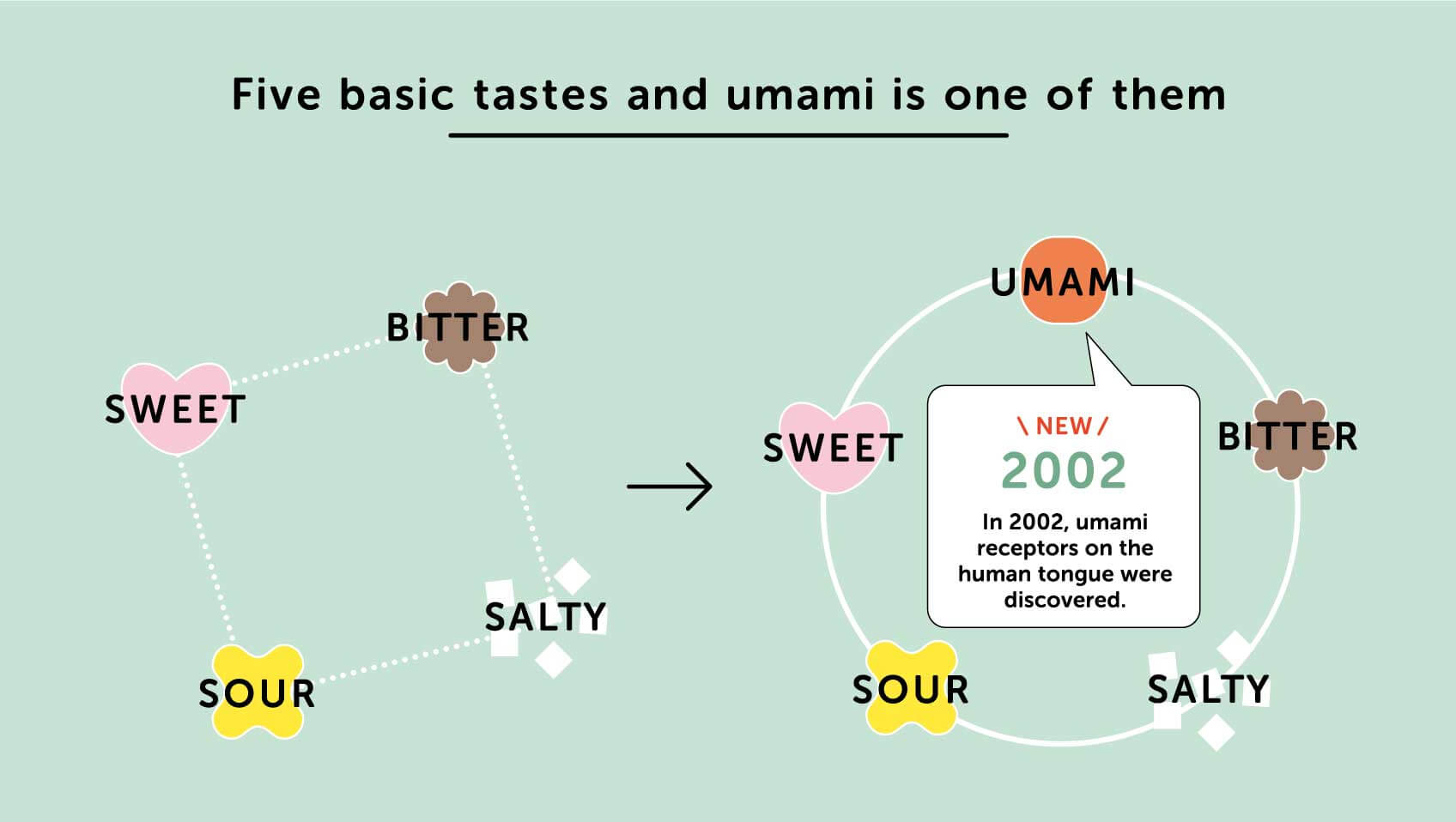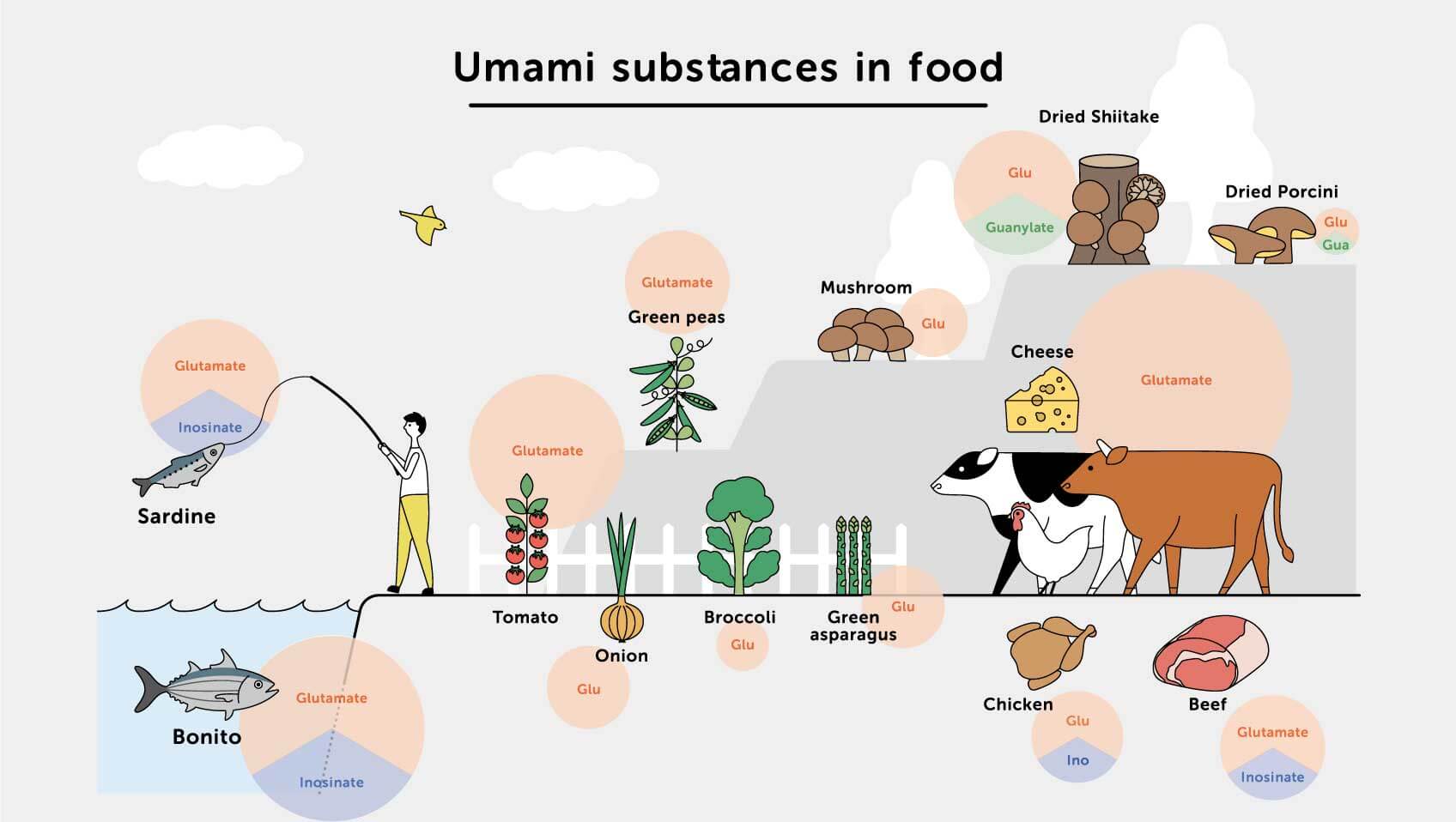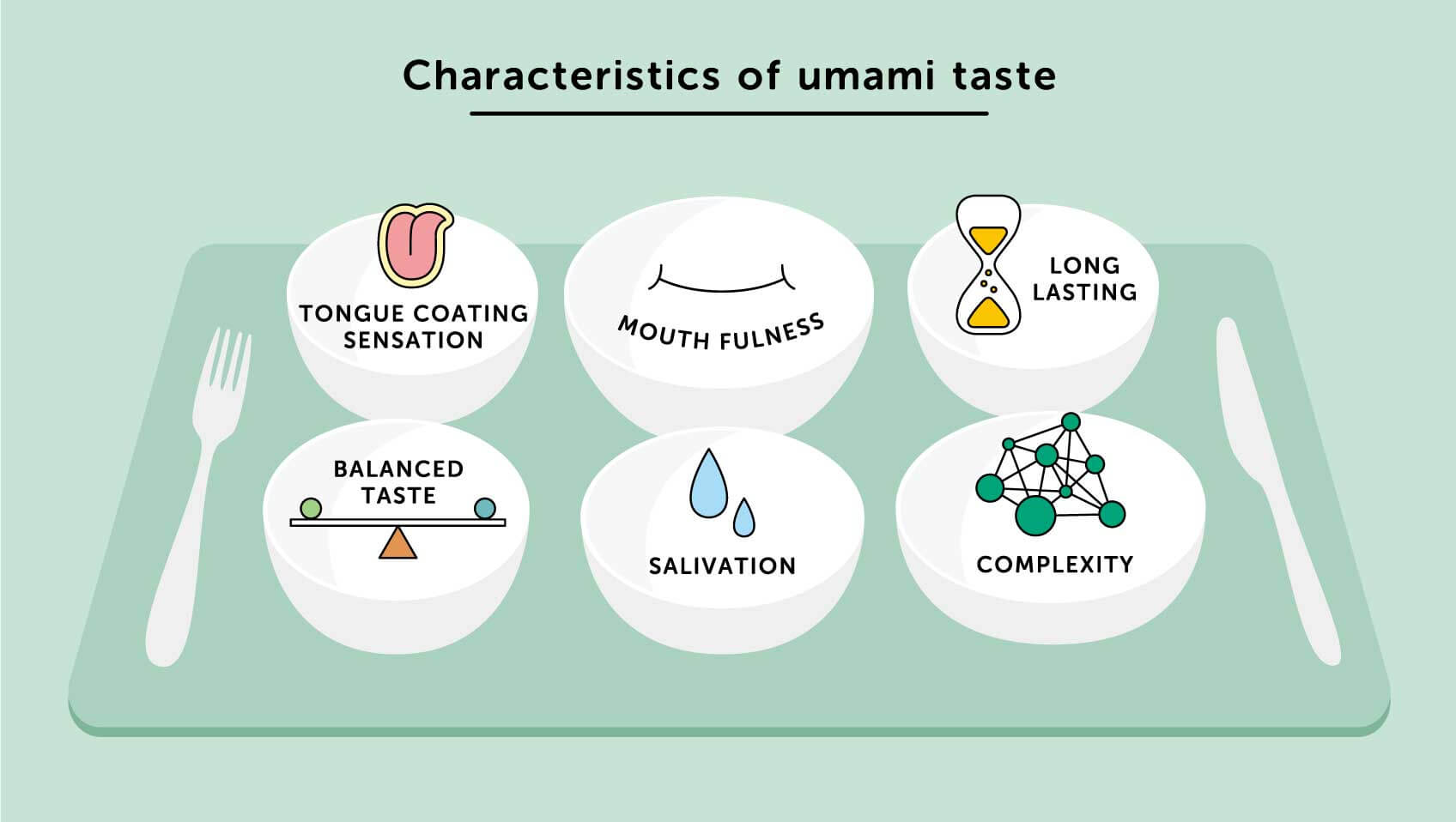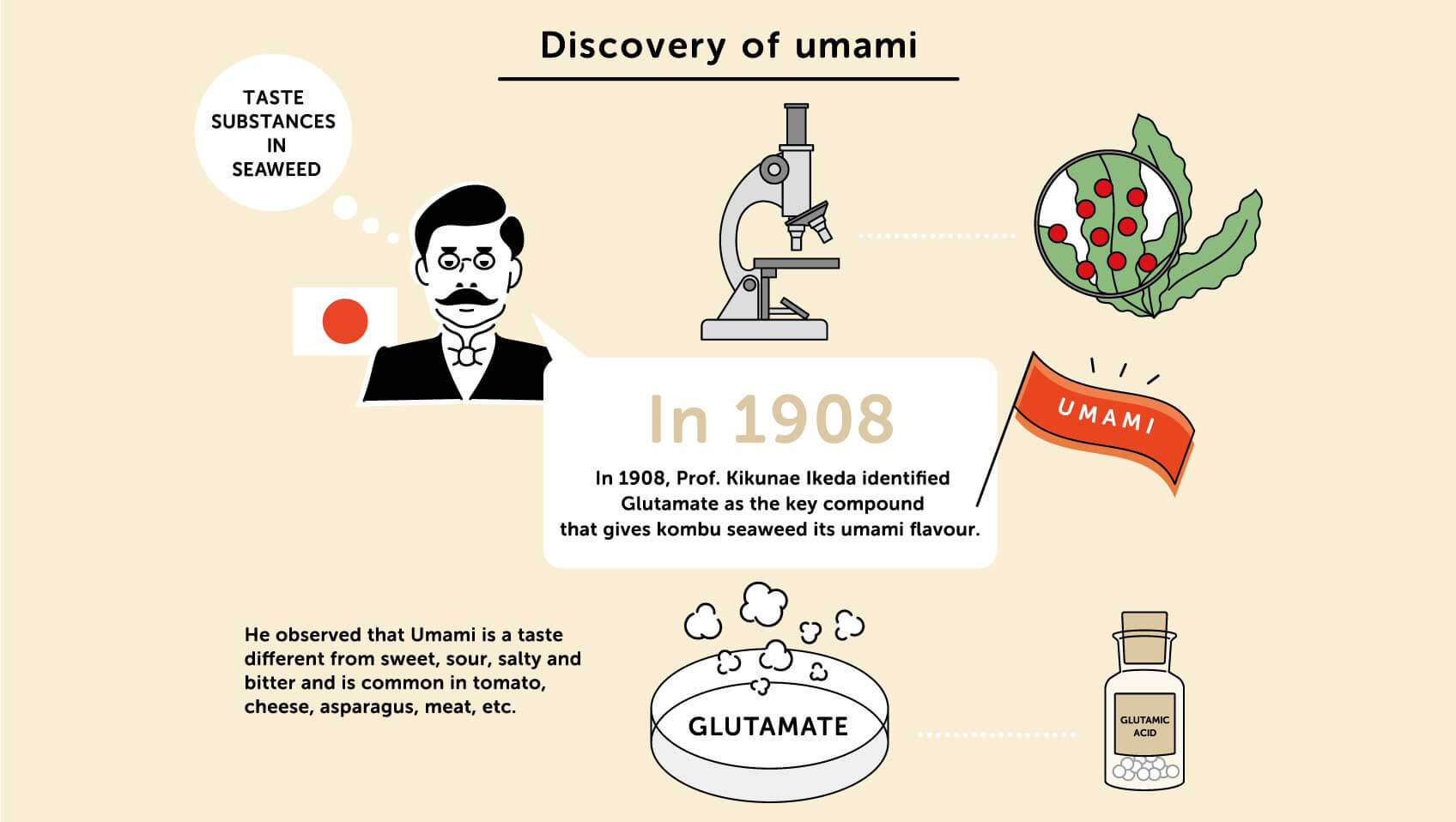What is Umami?
Umami, which is also known as monosodium glutamate is one of the basic five tastes including sweet, sour, salty, and bitter. Umami means “delicious savory taste” in Japanese, and its taste is often described as the meaty, savory deliciousness that deepens flavor.
Table of Contents
Umami is more than a buzz word

Umami is the core fifth taste. Scientists identified umami taste receptors on the human tongue in 2002 (alongside the sweet, sour, bitter, and salty taste buds). Meaning that umami is an inherent taste universally enjoyed.
Umami is found in our everyday food

To get technical, umami is the taste of glutamate, an amino acid that is one of the building blocks of protein. Glutamate occurs naturally in the human body and in many delicious foods we eat every day, including, but certainly not limited to, aged cheeses, cured meats, tomatoes, mushrooms, salmon, steak, anchovies, green tea—and the list goes on.
Salt reduction with umami
Umami can not only enrich our diet, but also contribute to solving global health issues. Sodium chloride, or table salt, is one of the leading causes of cardiovascular disease. The World Health Organization has established a goal of reducing average salt intake by 30%. The use of monosodium glutamate, or MSG, the main component of umami seasonings called AJI-NO-MOTO®, may be the key to reducing sodium content without sacrificing taste.
Umami has 3 distinct properties

Umami taste spreads across the tongue
Umami lasts longer than other basic tastes
Umami provides a mouthwatering sensation
Umami taste is easy to achieve
Whether intentionally or unintentionally, we often add umami whenever it seems like something is missing in our food. Cooking with ingredients rich in glutamate will round out the flavors in any dish. Umami boosters are great to stock your pantry with include ketchup, miso, truffle oil, ranch dressing, and soy sauce, to name a few. The source of proteins like pork, beef, fish, and shellfish make strong umami foundations and vegetables like tomatoes, mushrooms, and seaweeds are also high in glutamate (umami substance). And for the purest form of umami, sprinkle a dash of monosodium glutamate (MSG). Add any combination of these glutamate-rich ingredients and you’ve got an umami bomb!
Umami was discovered over 100 years ago in Japan

Umami substance was first identified by Japanese scientist Dr. Kikunae Ikeda. While enjoying a bowl of kelp broth called kombu dashi, he noticed that the savory flavor was distinct from the four basic tastes of sweet, sour, bitter, and salty. He named this additional taste “umami,” which literally means “essence of deliciousness” in Japanese. Dr. Ikeda eventually found that the taste of umami was attributed to glutamate.
International recipes to enjoy umami
Nick Lee’s World Umami Cooking Competition winning recipe combined ingredients naturally rich in umami, such as kombu, Parmigiano Reggiano, tomatoes, and shiitake mushrooms. The dish reflected the influence of both Western and Eastern cultures.
General questions about umami
What does umami taste like?
Umami taste is often described as the meaty, savory deliciousness that deepens flavor.
What is the definition of umami?
Umami is the core fifth taste. Scientists identified umami taste receptors on the human tongue in 2002 (alongside the sweet, sour, bitter, and salty taste buds). Meaning that umami is an inherent taste universally enjoyed.
What does umami mean?
“Umami” literally means “essence of deliciousness” in Japanese. Dr. Ikeda eventually found the taste of umami was attributed to glutamate.
What foods contain umami?
To get technical, umami is the taste of glutamate, an amino acid that is one of the building blocks of protein. Glutamate occurs naturally in the human body and in many delicious foods we eat every day, including, but certainly not limited to, aged cheeses, cured meats, tomatoes, mushrooms, salmon, steak, anchovies, green tea—and the list goes on.
Learn more about the Ajinomoto Group
Get to know us

Smart solutions to reducing salt without compromising taste
Japan is renowned for its simple yet elegant cuisine, or washoku, and long life expectancy. But while the Japanese diet is packed with a wide array of healthy and nutritious ingredients, many foods––including soy sauce, miso, preserved fish, and pickled vegetables––are prepared in ways that increase sodium.You may also like

Stirring the emotions with umami: the rise of a young Korean-American chef
There is a taste from home that Nick Lee will always remember – one that connects his past and his future. It is also a taste that helped him win a prestigious cooking competition.